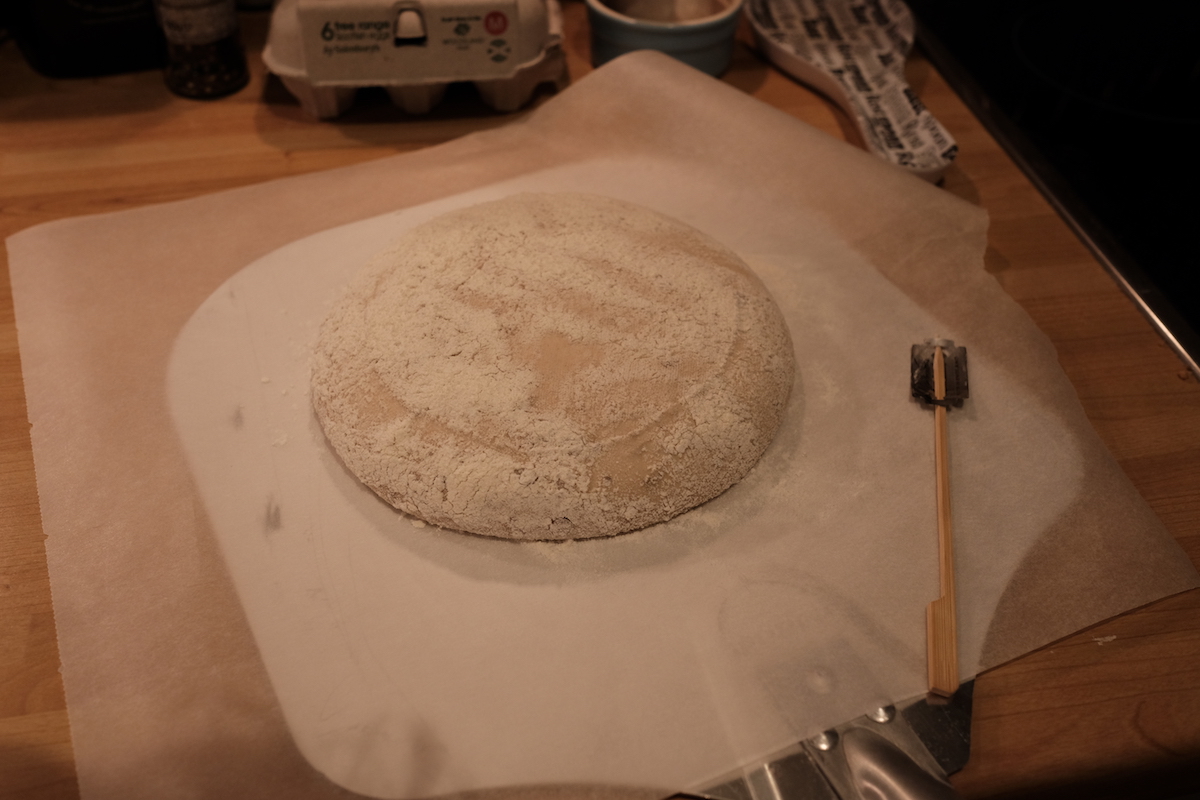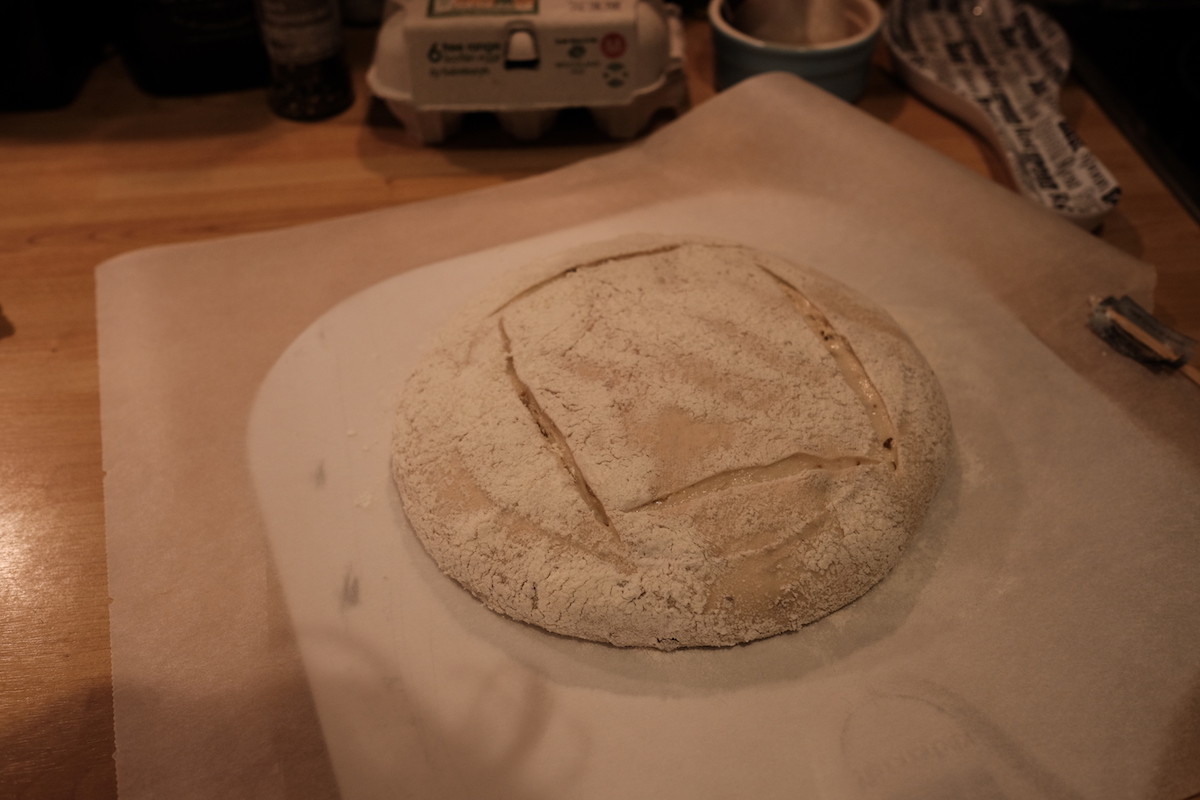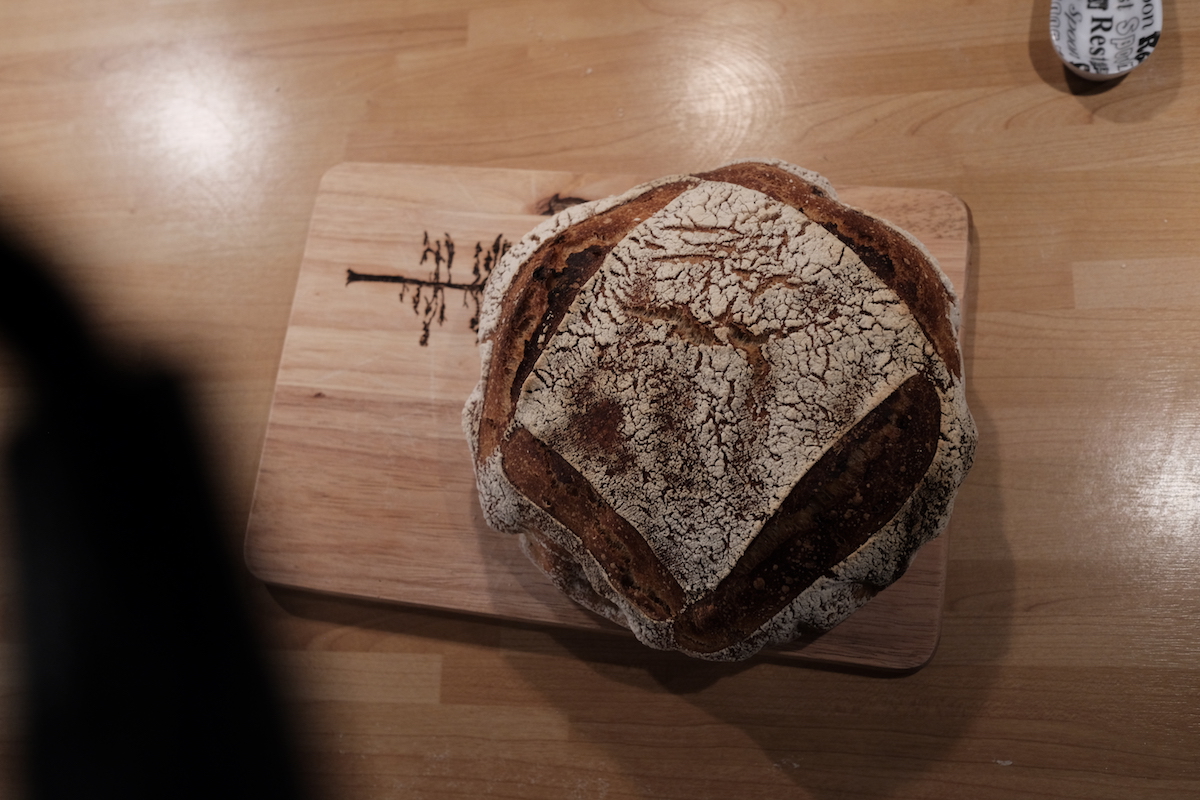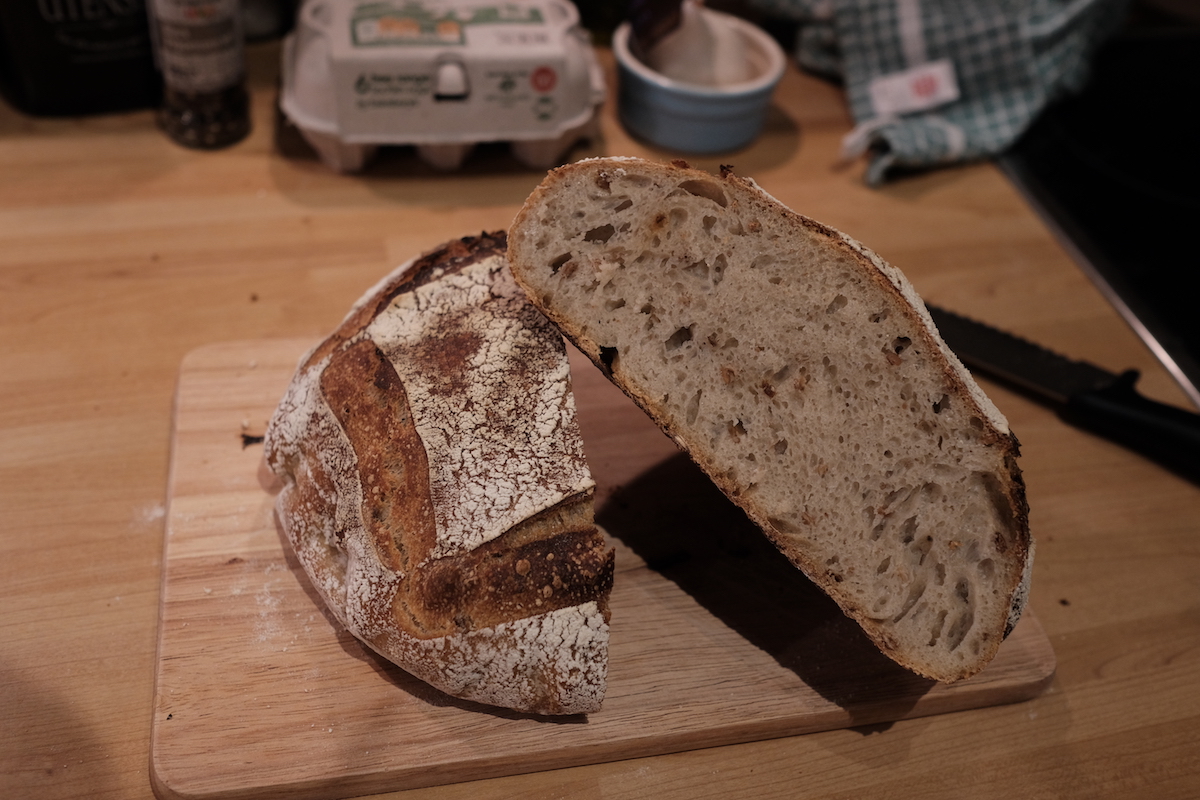Steps Forward and Back
This weekend I forayed from the safety of my go-to Flour Water Salt Yeast book to try a recipe from The Perfect Loaf. The reasoning for this was that I was keen to improve the scoring on my bread. FWSY says that scoring is unnecessary and you are fine to just let your loaves split naturally. However, I’m keen to improve the neatness of my loaves and want to move on baguettes which will certainly require scoring. If you don’t score your loves they can split anywhere on the loaf as they expand - leading to a less even bake.
Going into this bake there were two factors I wanted to change in comparison to my previous loaves:
- I wanted to generate greater tension in the dough at both the folding and shaping stages. In practice, this should help the dough retain its shape and should make it easier to score.
- I wanted to try and follow the recipe someone who likes to score their bread. The key difference with this recipe was that your shaped dough sits in a proofing basket overnight, previously I would do a long bulk overnight and only waiting a short time after shaping to bake in the morning.
I had varied success with these goals. Maurizio from The Perfect Loaf calls for room temperature water to feed your starter prior to baking. However, my room temperature in cold Edinburgh flat at this time of year is around 14℃. Knowing this, I tried using warmer water (by 2-3 degrees) than the recipe called for. In retrospect, though I feel I should have gone even warmer, my final dough temperature still managed to be 3 degrees cooler than was expected in the recipe.

I was determined to get a tight ball when shaping my dough which proved difficult as I had possibly the wettest dough I have worked with yet. Over 5 minutes I eventually got a great round ball, but at the expanse of the great rise I generated with my starter. I noticed the next morning after baking my bread that I have been using Allinson’s Country Grain Bread Flour which I had naively presumed to be wholegrain flour - it is, in fact, a blend of various flours. I presume mixing this (which already contains a deal of white and rye flour) with my mix of white and rye flour resulted in skewed proportions of water to flour. From what I have read, rye flour will typically be less absorbent of water and will give you a stickier dough.

Although I struggled to shape the dough, the tension I generated seemed to have worked very well. Scoring the loaves worked really well, in the past the razor has immediately gotten stuck to the dough. In this case, it glided right through the dough no problem - I actually wish I had cut deeper and gone for a bigger cut once I knew that it was going to cut well.

One other thing I have previously struggled with is getting the dough from the proofing basket to the counter and then to the combo cooker. I read on Maurizio’s blog that you can use baking paper and a pizza peel to invert the basket straight onto the paper which can simply be lifted in the pan. This turned out to be so much easier than trying to lift a wet dough with just my hands. The only downside to this was that I cooked the loaf in the deep pan of the combo cooker, this made the baking paper curl in at the edges and left me with a bumpy shaped loaf. In the future when I have a good tight boule, I will just cook in the lid (inverting the pan) and the paper should pull less at the edges of the dough.

You can see here the boule had significantly less rise than my previous post. I believe this was due to me overworking the dough during shaping and also due to me mixing the wrong flours. I’m going to try again soon with the right flour, warmer water and I’ve also ordered a new dough knife from an Oban based bakery equipment fabricator.